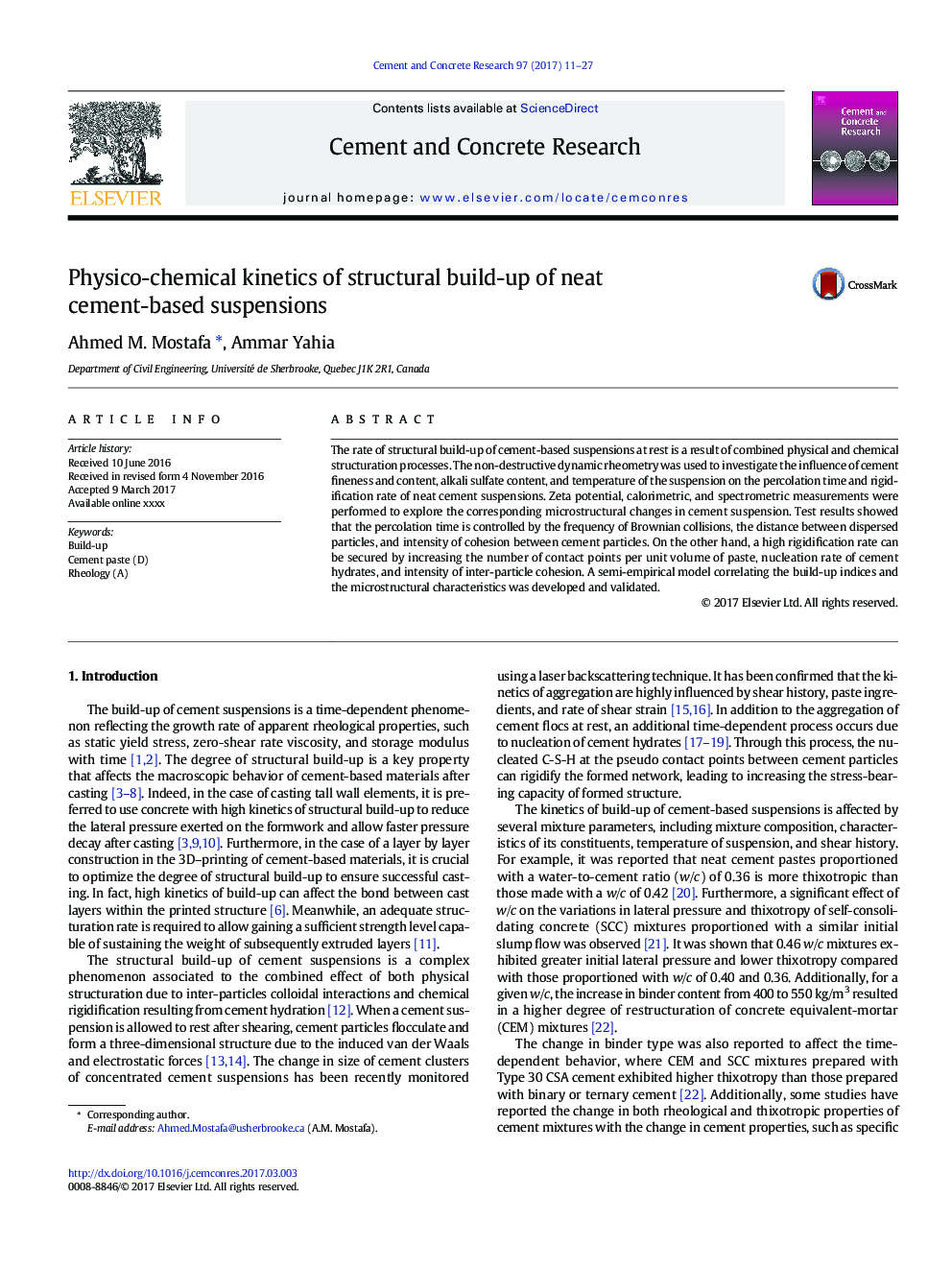| Article ID | Journal | Published Year | Pages | File Type |
|---|---|---|---|---|
| 5437165 | Cement and Concrete Research | 2017 | 17 Pages |
Abstract
The rate of structural build-up of cement-based suspensions at rest is a result of combined physical and chemical structuration processes. The non-destructive dynamic rheometry was used to investigate the influence of cement fineness and content, alkali sulfate content, and temperature of the suspension on the percolation time and rigidification rate of neat cement suspensions. Zeta potential, calorimetric, and spectrometric measurements were performed to explore the corresponding microstructural changes in cement suspension. Test results showed that the percolation time is controlled by the frequency of Brownian collisions, the distance between dispersed particles, and intensity of cohesion between cement particles. On the other hand, a high rigidification rate can be secured by increasing the number of contact points per unit volume of paste, nucleation rate of cement hydrates, and intensity of inter-particle cohesion. A semi-empirical model correlating the build-up indices and the microstructural characteristics was developed and validated.
Keywords
Related Topics
Physical Sciences and Engineering
Engineering
Industrial and Manufacturing Engineering
Authors
Ahmed M. Mostafa, Ammar Yahia,
